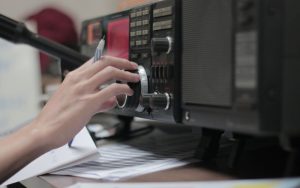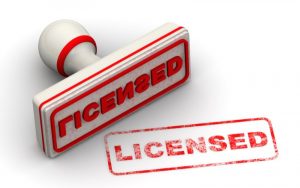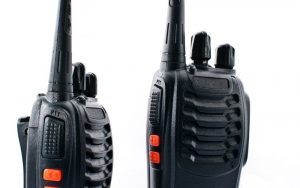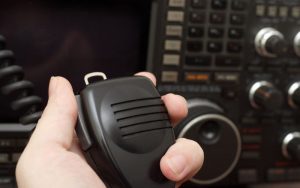Most people think of ham radio as a way to talk to people all over the world. And while that is definitely one of its features, there are many other things you can do with ham radio.
For example, did you know that you can use it to talk to people within a few miles of your location, or even just down the street?
Given the right conditions, ham radio can allow you to talk to people all over the globe. But just how far can you really talk? There are lots of factors that can affect transmissions and reception including equipment, weather, time of day and even the sun.
How far can ham radios reach?
It can sometimes be difficult to predict just how far a transmission will go because there are lots of variables involved besides the power output and antenna configuration.
The length and type(s) of antennas as well as line-of-sight propagation from one station to another all play important roles in determining how far you can talk on ham radio.
In most cases, you can make contacts up to around 100 miles under ideal conditions with the right equipment. But it’s possible to reach more than 1,000 miles depending on what time it is and how far apart your stations are.
How does the weather affect the range of ham radio?
Fortunately for radio amateurs, the range of signals isn’t limited by the curvature of the Earth because signals can bounce off other objects to reach faraway receivers.
With that in mind, it’s not surprising that you might be able to talk further depending on what weather conditions are like at your location and where you’re trying to contact.
Signals will usually travel better through open air than they would through rain, clouds or snow.
Weather also plays a role in selecting an operating frequency – different conditions affect how well certain frequencies propagate – and lower bands tend to be more favoured during poor propagation conditions since there is less absorption of signals by the D-layer in the ionosphere (which occurs most often during daylight hours).
For instance, when you want to make a ham radio contact and it’s raining in your area, you might find that signals will propagate better on higher frequencies because the signal won’t have to pass through as much moisture or water vapour in the atmosphere.
What about time of day?
Generally speaking, at night frequencies that are used during the day for long-distance contacts can be used to contact nearby stations because there is less atmospheric noise (caused by random electrical charges) than during daylight hours.
The lower amount of noise allows even distant stations to communicate using very small amounts of power.
When conditions are good enough at night, you’ll sometimes hear sporadic E propagation which occurs most often overnight but can also happen during the day.
During midday, radio waves tend to travel in mostly one direction which means that your signal might not be heard as far away by some stations.
This is because the ionosphere becomes unstable causing it to absorb at least some of the signals that are transmitted into it.
What equipment is used for ham radio communication?
Since distance can play such an important role in how well you communicate using ham radio, having the right type of equipment is important for making contacts on a regular basis.
The most important piece of equipment in your ham installation will be your antenna and, with a good antenna setup, it is possible to get some good results with low powered and cheaper radios.
A large antenna mounted on a sturdy support system will help your investment go further by allowing you to transmit your signal over greater distances.
Antenna selection is important when you talk about range because some types might favour certain bands over others due to their design and construction.
The type and size of antenna will very much depend upon the frequency bands that you intend to broadcast on and you will need to consider this before making any purchases or when building your own antenna.
For example many UHF or VHF frequencies typically use vertical or horizontal polarization for making contacts on specific bands which means that they won’t receive well if you use a different polarization.
The same holds true for high-frequency antennas that use horizontal polarization which might not be as effective when used on the lower bands due to their design and construction.
If you want to make long-distance contacts using a specific band, it’s important to consider how well an antenna will receive (or send) signals over that range before making your purchase because some antennas are designed with only one thing in mind instead of being versatile enough to cover all bands.
It is possible to get some good results from long wire antennas or end fed antennas that use a device known as an Unum ( a type of transformer ).
Many of these types of antennas will tune and work well across all of the HF bands used by ham radio – they also have the added advantage of being easy to erect and can be used for mobile installations as well.
This end fed antenna kit works well across all bands within the HF range from 10m to 80m and is widely available for purchase on Amazon.
How does the sun affect ham radio transmissions?
For amateur radio operators that enjoy working DX or making contacts over extremely long distances, the path their signals take to reach other hams can be greatly affected by the sun.
The F2 layer of the ionosphere which is used for long-distance communications during daylight hours (or when it’s not raining) acts like a mirror and reflects signals back to earth below it instead of allowing them to go into space.
This makes it possible for those signals to bounce off of multiple layers in the ionosphere before reaching their target which allows them to travel much further than they normally would using only one layer if conditions were different.
The effects of this type of propagation work both ways though with distant stations being able to hear your signal better than you can hear theirs if conditions aren’t optimal.
On the other hand, since this type of propagation is relatively unpredictable, there might be times when stations located in a different hemisphere will hear your signal with greater ease than stations that are located close to you.
Final Words
As you can see there is a wide range of factors affecting the distance that ham radio signals can reach.
One of the key interests and challenges for many ham radio operators is that of experimentation to try and achieve good results by working with the natural conditions and developing equipment and strategies to work long distances.
It’s part of the appeal of amateur radio and one that keeps many attracted to the activity.
Read Next
- Can ham radio survive EMP?
- Why do you need a ham radio license?
- What is 2m ham radio?
- What’s better ham radio or CB radio?
- Is morse code still useful?
- What does QRP mean in ham radio?











